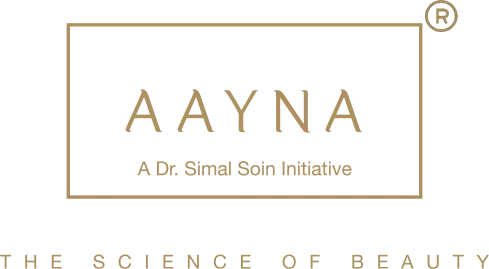When people with tattoos talk about getting them removed they are often hit with this one question, “Isn’t the main purpose of getting a tattoo because it’s permanent?” To some extent, it is also true. However, tattoos represent emotions, attachments, and feelings that might often fade with time.
There also might be situations where the tattoos that a person once got when they were younger don’t bode well with the kind of personality they have now. The reasons why you need to remove the tattoo and undergo laser tattoo removal are infinite and often subjective to each individual.
However, while we are mostly accustomed to the process of “getting a tattoo”, not knowing how the “tattoo removal” process works is a common thing. This article will explore all that you need to know about laser tattoo removal, its process, and the pros and cons that come with it.
Table of Contents
How does Tattoo Ink and Skin Interact?
What is Laser Tattoo Removal?
How Does Laser Tattoo Removal Work?
Understanding Laser Tattoo Removal and its Effectiveness
Are there any Side-Effects of Laser Tattoo Removal?
Conclusion
FAQs
How does Tattoo Ink and Skin Interact?
For the people that aren’t aware of the fact, tattoo ink, for the most part, is permanent. Now let us further understand the logistics of that first.
The tattoo ink is deposited through the needle into the second layer of the skin, otherwise known as the dermis. Here’s a quick breakdown of the process for better understanding:
Needle penetration – In this step, the tattoo artist uses a machine that has clusters of needles attached to it. These needles puncture the skin in an up-and-down fast-paced motion, penetrating through the epidermis to reach the dermal layer of the skin.
Ink deposition – Once the needle reaches the dermis, the ink that’s present in the needle is injected into those puncture wounds and deposited in the dermal layer of the skin.
Immune response – The ink that is injected into the skin consists of pigments, which are mixed in a carrier solution. Once injected into the dermis, the body triggers an immune response against it. However, since the ink particles are fairly large, it becomes impossible for the macrophages to break down and eliminate them.
Ink retention – The failed immune response then solidifies the permanency of the tattoo ink on the skin. The ink is typically trapped inside the fibroblasts, which are found in the skin’s dermis.
Over time, some of the ink particles might break down, which leads to the “ink spreading” and lightened appearance of the tattoo ink on the skin.
What is Laser Tattoo Removal?
Now that you have a basic understanding of the process of tattooing and ink retention in the skin, let us discuss laser tattoo removal.
Surprisingly, there are different ways of tattoo removal. Among them, laser tattoo removal is the one that most people commonly opt for. Besides this, treatments like chemical peeling, dermabrasion, surgical excision, and tattoo removal creams are also used for removing tattoos.
However, the prevalence of people opting for laser tattoo removal is due to the efficacy and the precise removal of the tattoo ink from the skin.
Laser tattoo removal uses lasers, which are focused light beams that are targeted on the tattoo ink to break down the ink particles into smaller particles, so it’s easier to be eliminated from the body. However, you need to understand that laser tattoo removal often involves the use of multiple sessions for desirable results.
How Does Laser Tattoo Removal Work?
The laser tattoo removal process is a fairly easy procedure. Typically, your objective should be to consult a trained and certified specialist with proven experience in laser tattoo removal for the most effective results.
At AAYNA Clinic, that’s the one factor we prioritize all the time. Our aim is to connect our clients with trained and certified professionals for precise and targeted tattoo removal results.
Here’s a general overview of how laser tattoo removal works:
Consultation
Is undergoing laser tattoo removal ideal for you? This is the question we answer during the initial consultation. No client at AAYNA can directly schedule a laser tattoo removal without prior consultation with one of our specialists. This is to assess the person’s health and even cross-check their medical history.
The initial consultation is also when our specialists assess the tattoo and skin type to determine whether you are an eligible candidate or not.
Laser Selection
The next step in laser tattoo removal is to choose the kind of laser technology to be used for the process.
Different types of lasers are used for tattoo removal, with each laser targeting specific ink colors. The most common lasers used are Q-switched lasers, such as Nd: YAG lasers or ruby lasers. The laser’s wavelength is chosen based on the colors of ink present in your tattoo.
Actual Procedure
Then comes the actual tattoo removal procedure. During the session, the laser is targeted toward the tattoo, and the laser device’s short pulses of intense light energy are focused on the ink particles that make up the tattoo.
The light is then absorbed by the tattoo ink particles that are present in the skin, leading to the eventual breakdown of the ink particles.
Ink Fragmentation
During the laser session, the laser energy breaks down the ink particles into smaller fragments. What’s great about using laser tattoo removal is the safety. Although it might inflict a little pinching pain for some individuals, laser tattoo removal doesn’t inflict any kind of permanent damage to the surrounding areas of the skin.
Fading and Removal
Depending on the size of the tattoo, a person might need multiple laser sessions to remove the tattoo’s presence on the skin permanently.
Once the laser tattoo removal session is over, the immune system comes into action, flushing out the broken down and fragmented ink particles from the body. To ensure seamless results, the person might need multiple sessions.
The number of sessions needed depends on factors such as the size, color, and depth of the tattoo, as well as individual variations in the body’s response to the treatment.
It’s important to note that laser tattoo removal may cause some discomfort or pain during the procedure, but numbing creams or local anesthetics can be used to minimize any discomfort. At AAYNA, we advise all the pre and post-treatment care to ensure optimal healing and minimal risks of complications.
Understanding Laser Tattoo Removal and its Effectiveness
Knowing how laser tattoo removal works isn’t the end of the road. In fact, the next common question that most people have is regarding the effectiveness of the treatment.
“Will laser tattoo removal completely remove my tattoo,” is a very commonly asked question. Let’s answer that too.
While the goal of laser treatment is complete removal, the outcome can vary depending on several factors. Following are a few factors you have to keep in mind:
Color and composition – Darker colored tattoos like black and dark blue have better chances of being removed, to a point that you won’t even realize they were present in the first place. Light-colored tattoos with ink colors like yellow, white, green, etc. are a little challenging to remove and might require more sessions.
Age and depth – Older tattoos are easier to remove and require fewer sessions. Even the tattoos that are injected superficially into the skin are easier to eliminate. Fresh and deeper ink, on the other hand, are a little tougher to remove.
Subjective factors – Each person’s response to laser tattoo removal can vary. Factors like skin type, immune system function, and overall health can influence the outcome. Individuals with lighter skin tones typically experience better results, as the laser can selectively target the tattoo ink without excessive damage to the surrounding skin.
These are a few factors that determine the effectiveness of laser tattoo removal. However, you need to understand that when it comes to tattoo removal, this is the easiest, most non-invasive, and quick result-yielding treatment.
Are there any Side-Effects of Laser Tattoo Removal?
Like any medical or cosmetic procedure, even laser tattoo removal comes with a few consequences. At AAYNA Clinic, we foster an environment of transparency and open communication. This is one of the reasons why our specialists communicate the potential side effects with our patients before commencing with the procedure.
Some of the potential side effects include:
- Risk of infection at the site of tattoo removal
- Slight chances of permanent scarring
- Chances of semi-removal of the tattoos (in select cases)
- Risks of hypopigmentation on the skin
- Risks of hyperpigmentation on the skin
These are a few potential side effects, which aren’t reflected in every case. If done by a trained, qualified, and experienced specialist, the risks of developing these side effects are close to none.
Conclusion
Laser tattoo removal is one of the most effective ways of getting rid of a tattoo that you either regret or don’t like the look of on your skin. It is a safe, clinically-regulated, and minimally invasive procedure that shows desirable results from the first session.
AAYNA Skin Clinic is a leading center that specializes in the latest cosmetic treatments like laser tattoo removal. If you want effective results with advanced technological equipment and experienced specialists, we’d recommend reaching out to us directly for an appointment.
FAQs
Does laser tattoo removal leave marks?
Laser tattoo removal is a highly targeted procedure, which, if done right and by a specialist should leave minimal to no scarring on the skin. In cases where scarring does occur, it is mostly seen in people with darker skin tones.
How much does laser tattoo removal cost in India?
The laser tattoo removal cost in India is variable. It depends on multiple factors, including the clinic you are getting it done from, the state or city you are in and also the size of the tattoo, and the number of sessions you’ll require.
How many sessions of laser tattoo removal are needed?
Laser tattoo removal is a gradual process, which means that you can’t remove the entire tattoo in a single session. In most cases, a minimum of five sessions is mandatory to eliminate all the ink particles and make your skin look like it was before.


